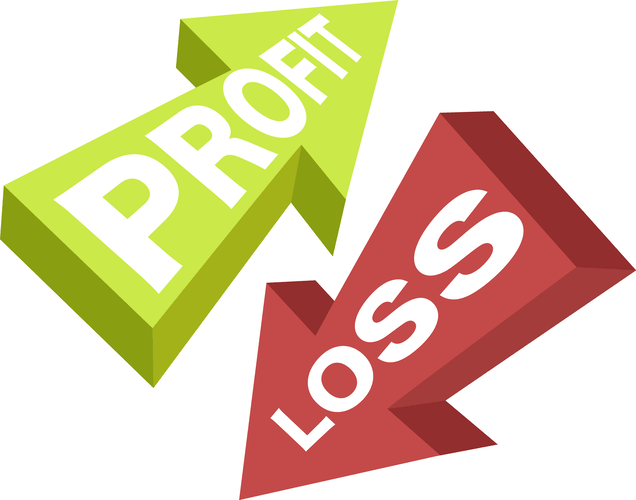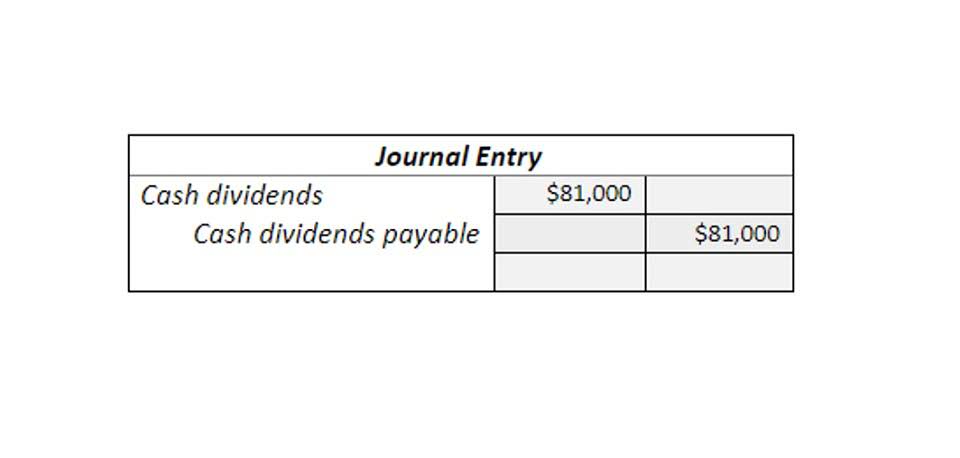Content

In a lot of instances, it can be seen that companies have more than one currency. They mainly keep alternate currencies in order to hedge themselves from the currency exchange risk. Inventory is a special case because it requires operational expenses to be converted into cash. These are a promise on the part of a bank or company that they will pay the amount listed on the note by the provided maturity date.

When a company is not using its cash balance, it may invest its cash in low-risk liquid securities to generate interest income. Therefore very liquid securities are sometimes called cash equivalents. As for the calculation of net debt, a company’s cash and cash equivalents balance is deducted from its debt and debt-like instruments. Furthermore, the cash and cash equivalent line item is always treated as a current asset and is the first item listed on the assets side of the balance sheet. Cash ratio is more restrictive than above mentioned ratios because no other current assets than cash can be used to pay off current debt. Most of the creditors give importance to cash ratio of the company, since it give them idea whether the entity is able to maintain stable cash balances in order to pay off their current debts as they come due. Quick ratio is liquidity indicator that defines current ratio by measuring the most liquid current assets in the company that are available to cover liabilities.
What Is Included In Cash Equivalents?
A guarantee from a bank to pay a seller on behalf of a buyer at a future date. It is a way to “guarantee” the exchange between buyer and seller when the relationship is long distance. There is a secondary market for banker’s acceptances, which makes them marketable securities. A financial agreement offered by banks that provides a premium interest rate to clients who are willing to leave a lump-sum of cash in a savings account, untouched, for a defined period of time. Bank drafts are are payments guaranteed by a bank on behalf of a payer. Like cash receipts, they are considered immediately liquid and accessible like cash on the bank account.

A demand deposit is a type of account from which funds may be withdrawn at any time without having to notify the institution. Examples of demand deposit accounts include checking accounts and savings accounts. All demand account balances as of the date of the financial statements are included in cash totals. To summarize the information mentioned above, it can be seen that cash and cash equivalents include any liquid cash that the company presently has available and other bank accounts and marketable securities that can readily be converted to cash. Cash flow statements divide cash flows into three categories based on the nature of their source transactions – operating, investing or financing activities.
Borrowing For Balance Sheet Cash
The advantage of money orders over checks is that it is more trusted since it is always prepaid. They are acceptable for payment of personal or small business’s debts and can be purchased for a small fee at many locations such as post office and grocery. Marketable securities are liquid financial instruments that can be quickly converted into cash at a reasonable price. Certificates of deposit may be considered a cash equivalent depending on the maturity date. Preferred shares of equity may be considered a cash equivalent if they are purchased shortly before the redemption date and not expected to experience material fluctuation in value. A balance sheet is a financial report that shows how a business is funded and structured. It can be used by investors to understand a company’s financial health when they are deciding whether or not to invest.
Cash equivalents are investment securities that are convertible into cash and found on a company’s balance sheet. Cash flow is the net amount of cash and cash equivalents being transferred into and out of a business. However, oftentimes cash equivalents do not include equity or stock holdings because they can fluctuate in value.
Short-term government bonds are mostly issued by governments to support government’s spending. They are mostly issued in country’s domestic currency and in the U.S government bonds include the Savings bond, Treasury bond, Treasury Inflation-Protected Securities and many others. Before investing into government bond investors should take into account political risk, inflation and interest rate risk. In the same manner, credit collaterals are also not supposed to be included as cash equivalents because there is ambiguity regarding the overall cash and cash equivalents timeline the amount will actually be realized. This is to ensure that the overall balances are in one currency so that stakeholders have proper clarity regarding the overall cash equivalents that the company has at the end of a particular given financial year. However, currency from other foreign countries must also be converted and reported in the report’s financial statements. The property, plant, and equipment category on the classified balance sheet reports assets that have lives of many years and are used in the company’s operation.

The opportunity cost of saving up CCE is the return on equity that company could earn by investing in a new product or service or expansion of business. Exceptions can exist for short-term debt instruments such as Treasury-bills if they’re being used as collateral for an outstanding loan or line of credit. In other words, there can be no restrictions on converting any of the securities listed as cash and cash equivalents. The current ratio tells you how many times a company’s assets could cover its debt. It’s a liquidity ratio, which means it gives you a snapshot of a company’s liquidity. A company’s accounts receivable is the outstanding money owed to it in the short term from customers or clients. It’s counted under current assets, because it is money the company can rightfully collect, having loaned it to clients as credit, in one year or less.
Is There A Difference Between The Definition Of Cash Equivalents And Cash?
In this manner, cash flow statements detail the change in the business’s cash and cash equivalents from period to period and how these changes have arisen through its activities. Cash and cash equivalents are counted under the same account because cash equivalents are assets almost as liquid as cash. Examples include Cash and Paper Money, US Treasury bills, undeposited receipts, Money Market funds, etc. Cash and cash equivalents help companies with their working capital needs since these liquid assets are used to pay off current liabilities, which are short-term debts and bills. The amount of cash and cash equivalents a business has is likely to change very regularly as income comes into the business and expenses go out of it. Net cash flow plus the value of cash and cash equivalents at the period’s beginning equals the value of cash and cash equivalents at the period’s end.
- Cash equivalents, in general, are highly liquid investments having the maturity of three months or less, have high credit quality and are unrestricted so that it is available for immediate use.
- For this reason, managers and investors calculate cash ratios, evaluate the cash flow statement, create cash budgets, and project future cash flows.
- GAAP allows this financial statement presentation because some investments are so liquid and risk adverse that they are considered cash.
- Like cash receipts, they are considered immediately liquid and accessible like cash on the bank account.
- However, in the context of a business, “cash” is all of the above — it’s any form of money that can be used to make payments immediately, including debit cards.
- Treasury bills $200 Cash and cash equivalents balance $12,250 As we see, the cash and cash equivalents balance is $12,250.
It is calculated by adding total cash and equivalents, accounts receivable, and the marketable investments of the company, then dividing it by its total current liabilities. Current assets on the balance sheet include cash, cash equivalents, short-term investments, and other assets that can be quickly converted to cash—within 12 months or less. Because these assets are easily turned into cash, they are sometimes referred to as “liquid assets.” Cash and cash equivalents are recorded on the balance sheet as a current asset. Its value changes each time that the business either receives or spends cash and cash equivalents. Such changes are called cash flows and are described in transactions recorded on the accounting ledger. For example, if a business spends $200 to purchase supplies, that is recorded as an increase of $200 to its supplies and a corresponding decrease to its cash and cash equivalents.
Calculation Of Cash And Cash Equivalents
Free Financial Modeling Guide A Complete Guide to Financial Modeling This resource is designed to be the best free guide to financial modeling! T-BillTreasury Bills (T-Bills) are investment vehicles that allow investors to lend money to the government. In another case, a huge pile of up cash for capital-intensive firms would imply an investment in a big project or machinery.
- However, to declare cash equivalents as liquid assets, it also becomes essential to have the known market price for all these instruments.
- The conversion should provide results comparable to those that would have occurred if the business had completed operations using only one currency.
- There are very rigorous standards for an asset to be classified as a cash equivalent.
- Cash is physical money, and cash equivalents are assets that can easily convert to specific amounts of cash.
- Net cash flow plus the value of cash and cash equivalents at the period’s beginning equals the value of cash and cash equivalents at the period’s end.
- • The amount a business has in cash equivalents and cash is included on the balance sheet on the first line because these items are the business’s most liquid assets.
- For simplicity, the total value of cash on hand includes items with a similar nature to cash.
Short-term investments aren’t as readily available as money in a checking account, but they provide added cushion if some immediate need were to arise. However, the main contingency in this regard is the fact that these investments have to be short-term, and the overall investment duration should be three months or less. In the case where the investment is for a longer time duration, it should be classified into other investments. Examples of demand deposit accounts are mainly all saving accounts or checking accounts. Therefore, all demand account balances are also included in the balances at the end of a subsequent year.
Examples Of Cash Equivalents
For some entities $50 is adequate amount of cash, whereas for others the minimum sum should be $200. Petty cash funds must be safeguarded and recorded in order to avoid thefts. Often there is a custodian appointed who is responsible for the documentation of petty cash transactions. Cash in checking accounts allow to write checks and use electronic debit to access funds in the account. Investopedia requires writers to use primary sources to support their work. These include white papers, government data, original reporting, and interviews with industry experts.
Long-term investments are technically not current assets, however, their liquidity (i.e. ability to be sold in the open market without a material loss in value) can allow them to be grouped together for purposes of financial modeling. Nevertheless, where bank borrowings which are repayable on a demand form an integral part of company’s cash management, bank overdrafts are considered to be a part of cash and cash equivalents. However, companies with a big value of cash and cash equivalents are targets for takeovers , since their excess cash helps buyers to finance their acquisition. High cash reserves can also indicate that the company is not effective at deploying its CCE resources, whereas for big companies it might be a sign of preparation for substantial purchases.
We also reference original research from other reputable publishers where appropriate. You can learn more about the standards we follow in producing accurate, unbiased content in oureditorial policy. Perhaps Nintendo has fortified itself with cash, because memories of the 1980s crash of the video game industry are still fresh. During that time, video game companies lost hundreds of millions of dollars and laid off thousands of employees as demand dropped and sales plummeted. It is a clear reflection about the overall ability of the company to meet its day-to-day expenses and ensure that they honor their financial commitments on time. The overall reasoning behind the proper calculation of https://www.bookstime.com/ is that it is directly related to the overall liquidity structure of the company. Therefore, it can be seen that Cash and Cash Equivalents are a group of assets that the company owns.
They are categorized as current assets on the balance sheet as the payments expected within a year. The assets considered as cash equivalents are those that can generally be liquidated in less than 90 days, or 3 months, under U.S.
Restricted cash is the amount of cash and cash equivalent items which are restricted for withdrawal and usage. Restricted cash can be also set aside for other purposes such as expansion of the entity, dividend funds or “retirement of long-term debt”. Depending on its immateriality or materiality, restricted cash may be recorded as “cash” in the financial statement or it might be classified based on the date of availability disbursements.
Harold Averkamp has worked as a university accounting instructor, accountant, and consultant for more than 25 years. The company may tend to misuse this excess balance in the wrong way and end up utilizing the entire balance.
Investments With Original Maturities Of Three Months Or Less
For example, the Christopher Corporation’s balance sheet includes $230,000 of buildings in which the company houses its offices and that are expected to last for many years. They usually range from 2 to 10 years in maturity, and they should not be confused with treasury bills that have a maturity of less than 1 year. Moreover, other cash is not the same as “cash equivalents,” which refer to non-monetary holdings that can be quickly converted into cash or other cash (i.e they’re “liquid”). While money is stored in a cash equivalent for any of these reasons, companies can benefit from the ability to earn interest; however, typically less than what they could have earned from long-term investments. These are financial assets that can be quickly and easily converted into cash, which means that they have a degree of liquidity. There are three primary classes of assets in financial investing, and cash equivalents are one of these. Cash equivalents, in general, are highly liquid investments having the maturity of three months or less, have high credit quality and are unrestricted so that it is available for immediate use.
Rather than comparing all current assets to the current liabilities, the quick ratio only includes the most liquid of assets. The breakdown of the total cash and cash equivalents is shown in the note to financial statements. The noted breakdown normally shows the balance of cash on hand, cash at the bank, and other cash equivalent items. IAS 7 Statement of Cash Flows requires an entity to present a statement of cash flows as an integral part of its primary financial statements. Cash flows are classified and presented into operating activities (either using the ‘direct’ or ‘indirect’ method), investing activities or financing activities, with the latter two categories generally presented on a gross basis.
Calculating Net Cash Flow
Investors look at change in cash and equiv as a reflection of changes in a company’s liquidity and solvency. There are very rigorous standards for an asset to be classified as a cash equivalent.
Cash and cash equivalent are generally recorded in the balance sheet of a company under the current asset section with the same name as cash and cash equivalent and only the overall value is shown. The break up of the overall sum is provided by a note at the end of the financial statement. The cash and cash equivalent will generally bear a number beside its total, which generally describes the serial number in the notes section to understand the break up of the cash and cash equivalent. Cash and cash equivalents are part of the current assets section of the balance sheet and contribute to a company’s net working capital.
These are investments that a company plans to sell quickly or can be sold to provide cash. However, the primary determinant of an item to be included as a Cash Equivalent is the premise that they should have maturities of three months or less. Furthermore, Cash and Cash Equivalents are also important factors for calculating numerous other ratios and calculations. It provides very useful insight regarding cash management at the company and how it can be improved due to better management practices.